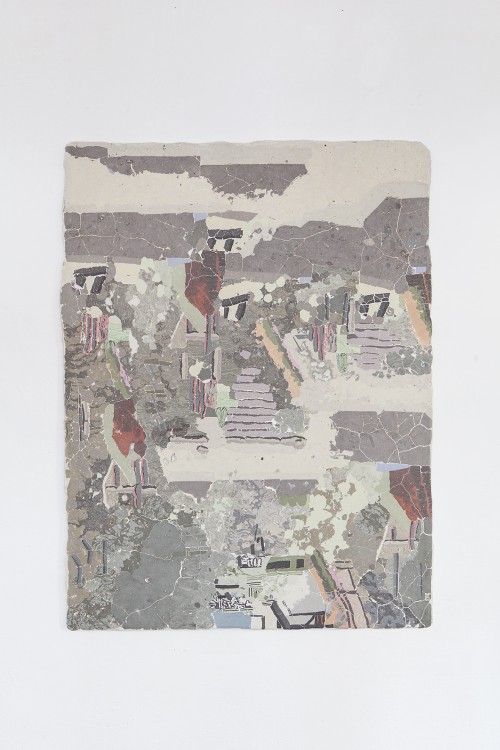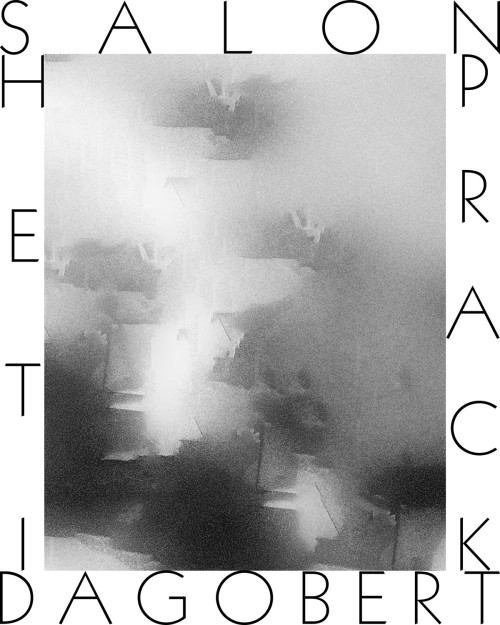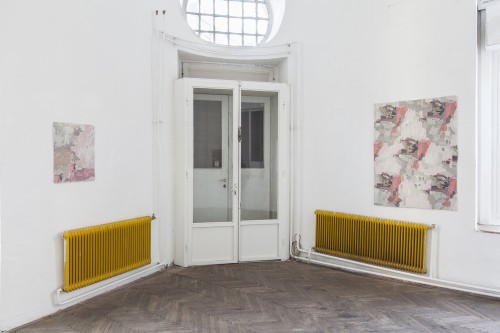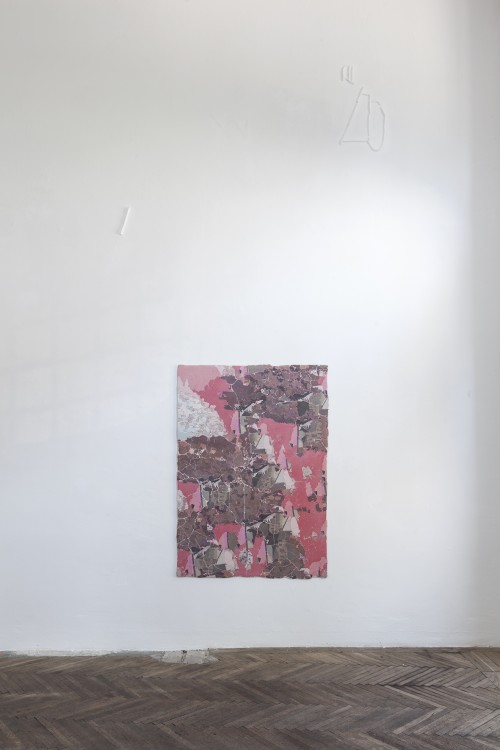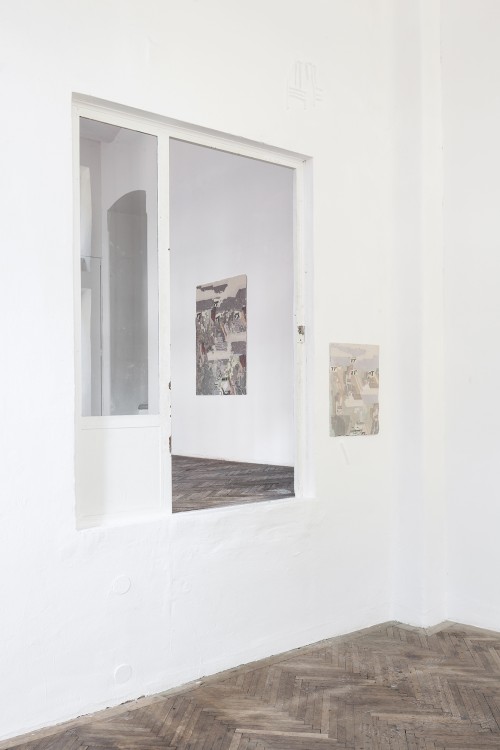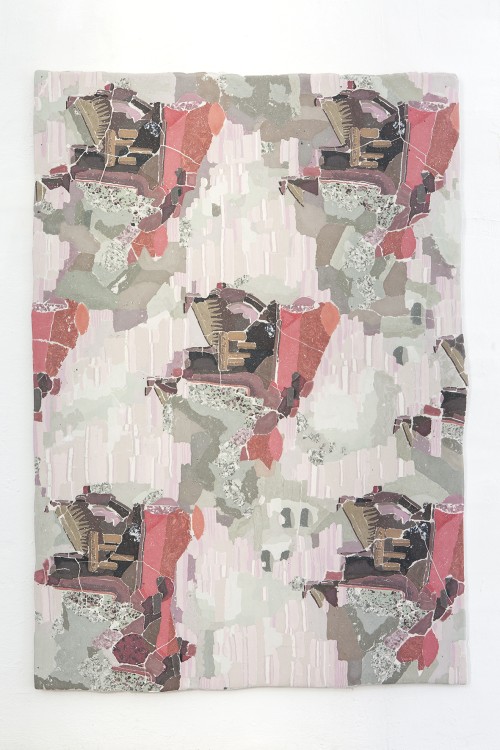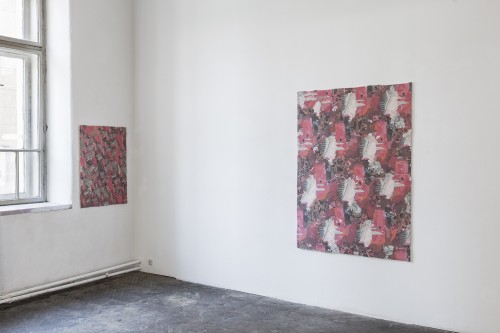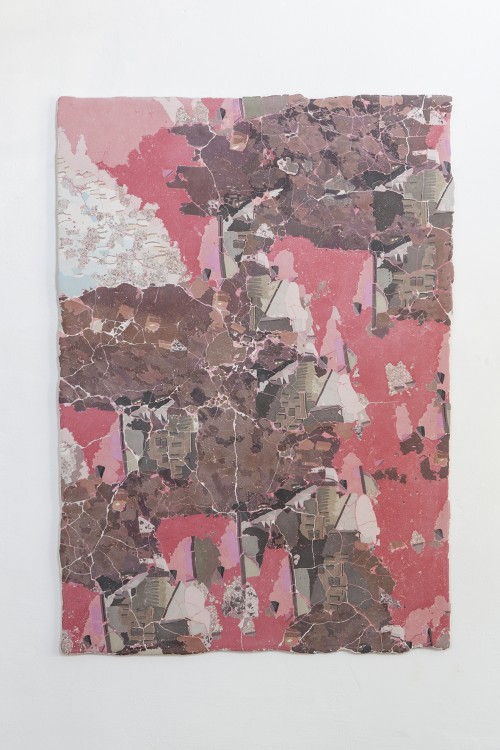Salon Dagobert
27.05. — 04.07.2021
Part of Independent Space Index:
Saturday: 3.7.2021 12-19h
Sunday: 4.7.2021 12-19h
hetiprack.com
handout\_deutsch.pdf
handout\_englisch.pdf
SALON DAGOBERT
You are invited to a salon. Or into a salon? The salon, the parlor, is both a place and an event. A room for receiving, for representation, for living, but also a form of social gathering. People come together, but not without formalities; they socialize with a certain common interest and with certain rules. In any case, the salon is indoors. From the outside everything looks proper, but inside it may get quite odd. At a first glance everything looks well-behaved, often bourgeois, but on closer inspection, there are eccentricities to the point of being quirky. This can also be said about the architecture and the interior design of the 1920s in Austria, the aesthetics of which inspires SALON DAGOBERT. The exhibition is, among other things, a tribute to personalities such as Dagobert Peche and Friedl Dicker, as hidden in the titles of the works. In retrospect, the interwar period presents itself as an ambivalent moment; an atmosphere of departure and also, for the time being, the last heyday of the salons, which were mostly run by women and became important places and events of early feminism. It is a glamorous time - which is also implied in the meaning of the name Dagobert: the one who shines like the day. At the same time, from today’s perspective, we can hardly look at this period without focusing on the catastrophes looming on the horizon.
A century later, we can look at SALON DAGOBERT starting from this ambivalence. The irregular patterning of Heti Prack's works, built up from recurring elements and at times almost ornamental, is reminiscent of the arts and crafts of the 1920s, of the detailed repeats of fabrics and wallpaper that might adorn a salon of the period. In a sense, one is transported into such a living room and a hundred years into the past, however not through a simple reenactment. Rather, the salon is transferred into an unusual material and pressed flat against the wall, creating the impression of futuristic glitches. Or else, the reversible figure immediately reverses and one translates this time jump spatially; one reads the patterning as grids and clusters from high up, from a bird’s - or perhaps rather a drone's - point of view. SALON DAGOBERT thus makes a classic science fiction move, pushing itself off from a specific, situated past into a future from which it becomes possible to look at the present.
Furthermore, the technique and materials of the works suck into multiple and intertwined loops of time. Heti Prack's stucco marble technique is, on the one hand, a faithful quotation to the craft and a declaration of love to yet another art historical epoch, namely to the Baroque and its skill of imitation, which often build up to the point of absurdity. At the same time, these materials and techniques are alienated from their intended purpose, for the structure and plasticity that generally characterize stucco, here, only spook around in the space in a detached manner. The panels - themselves objects between paintings and sculptures or primitive information carrier - are characterized by mirror-smooth surfaces. However, this is only visible upon close inspection; seen from a distance, the matt, pigmented stucco marble suggests rough and textured surfaces. This contrast sucks us into another time warp, however, this time, one that is not satisfied with a few decades or centuries. We know marble as rock that is thousands of years old and which has, during its many metamorphoses, evolved not only into beautiful patterns, but is saturated with information about the various geological eras. The reversible figure tilts again and the works in SALON DAGOBERT present themselves as vertical profiles of soil samples; witnesses of deep-temporal processes of sedimentation and accumulation. And again one is confronted with a science-fictional question: What of all that is around us will have inscribed itself in the then thousand years old rock?
From one side, one enters SALON DAGOBERT as a domestic, neatly furnished interior. But you can't get too comfortable, because various elements and quotations from history make you wonder and question today's zeitgeist from future’s perspective. Another door of SALON DAGOBERT leads outside, into a past so distant that it could also be the future and vice versa. In this interweaving of outside and inside worlds, of human centuries and earth-historical millennia, it becomes clear that our decisions carry weight, despite and perhaps especially in the face of such hyper-large phenomena as the endless advance of (earth) history or the ancient light of extinguished stars.
Julia Grillmayr
